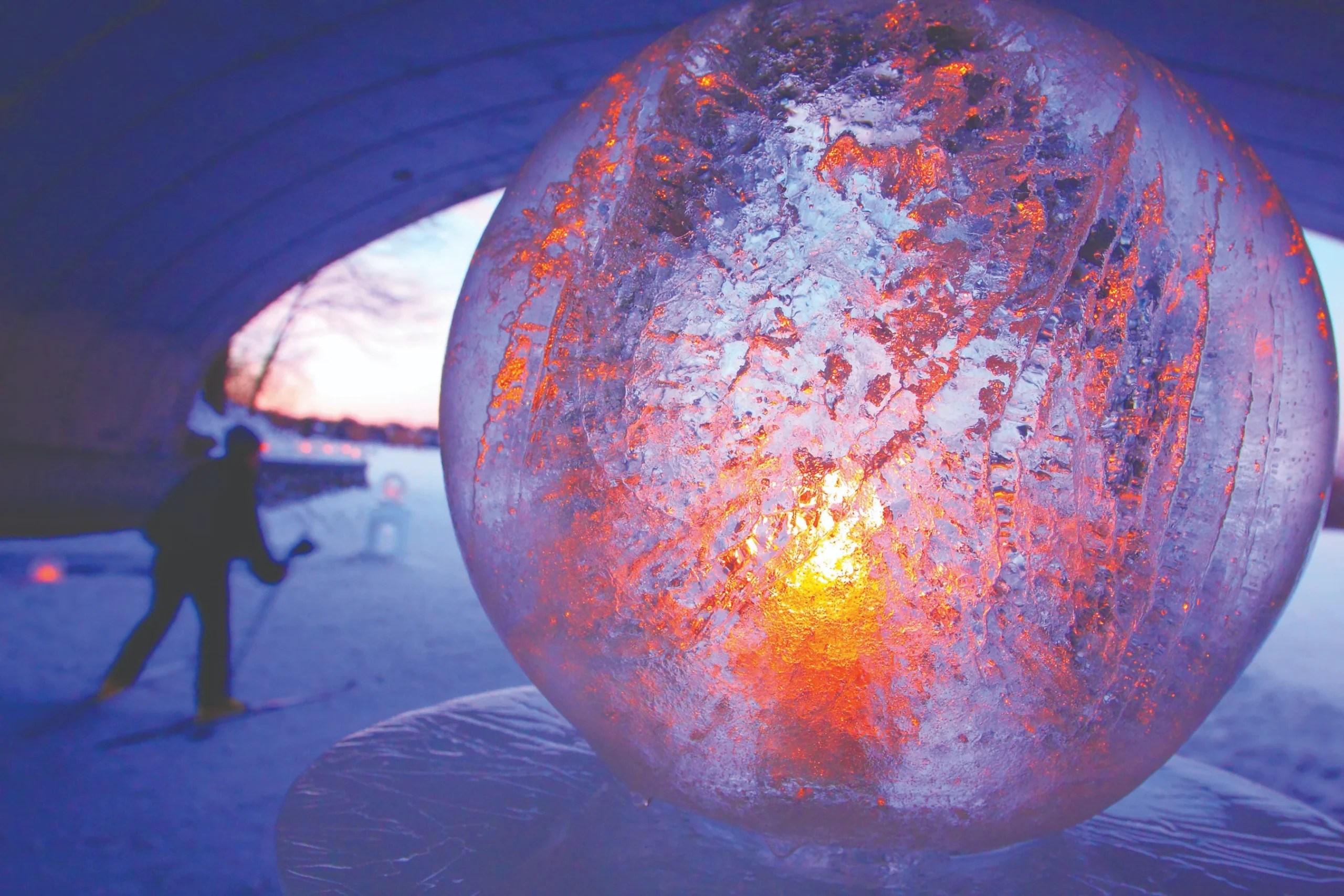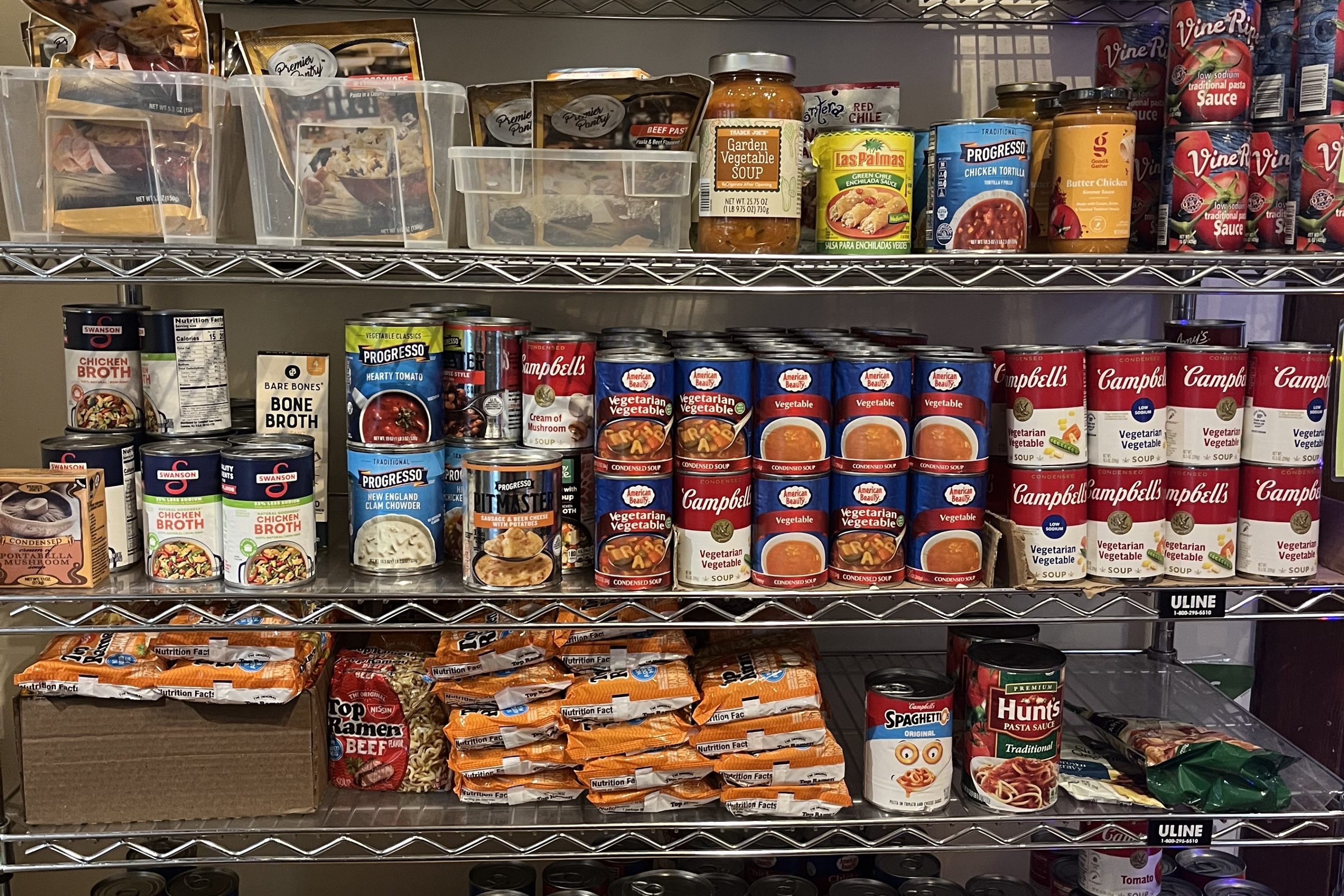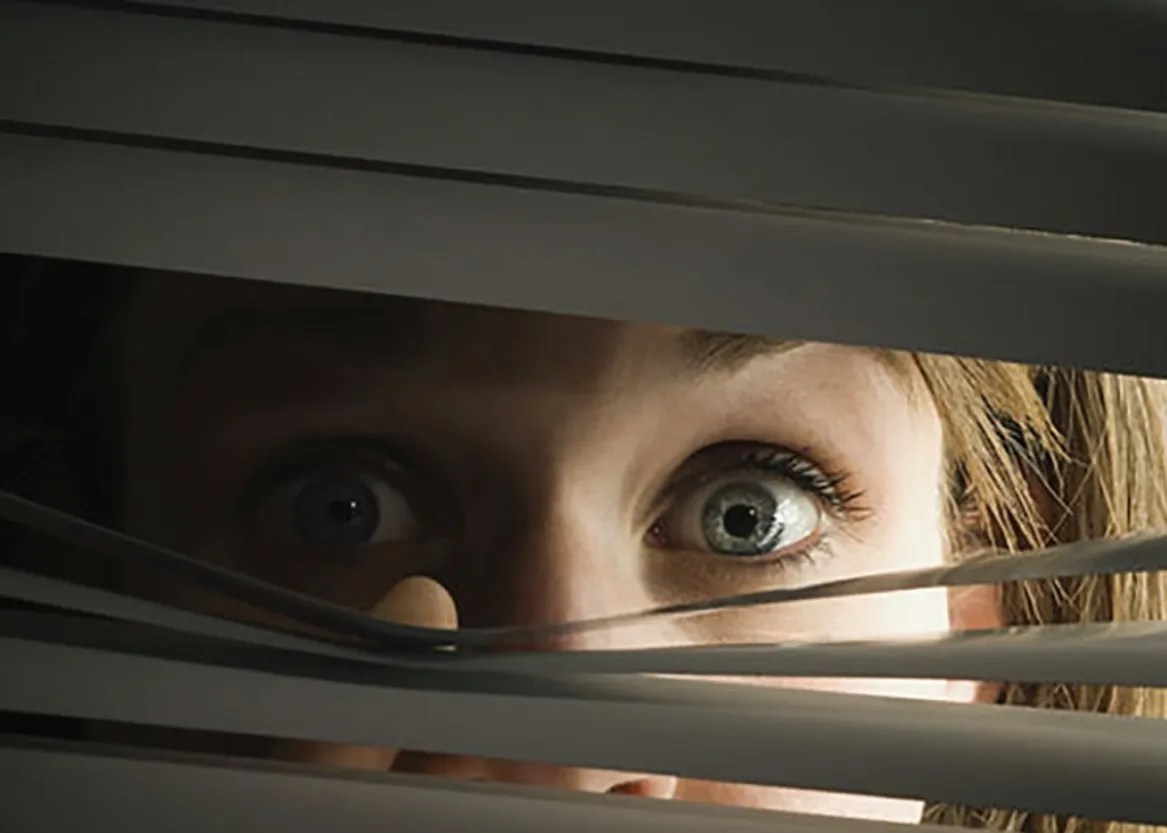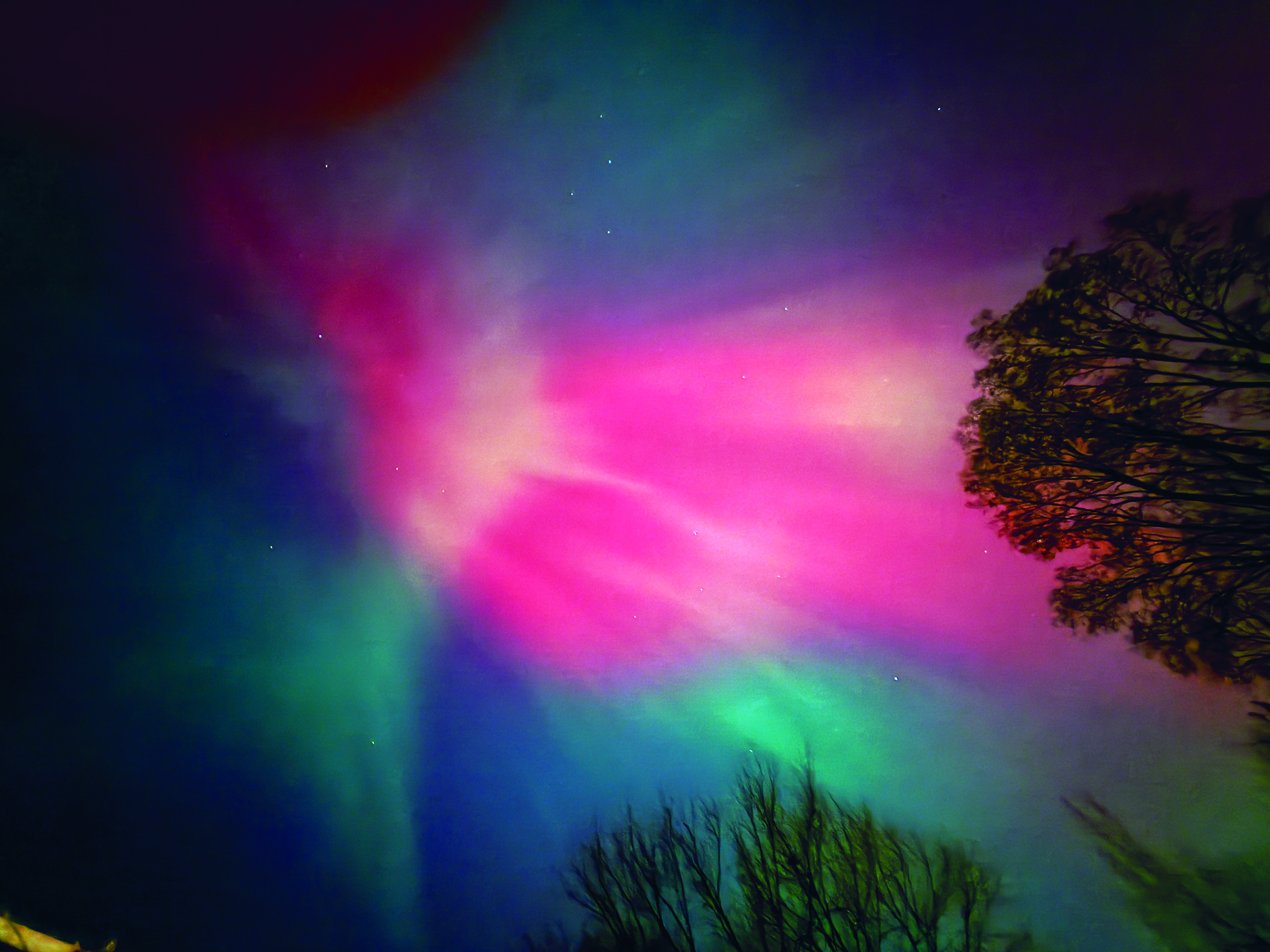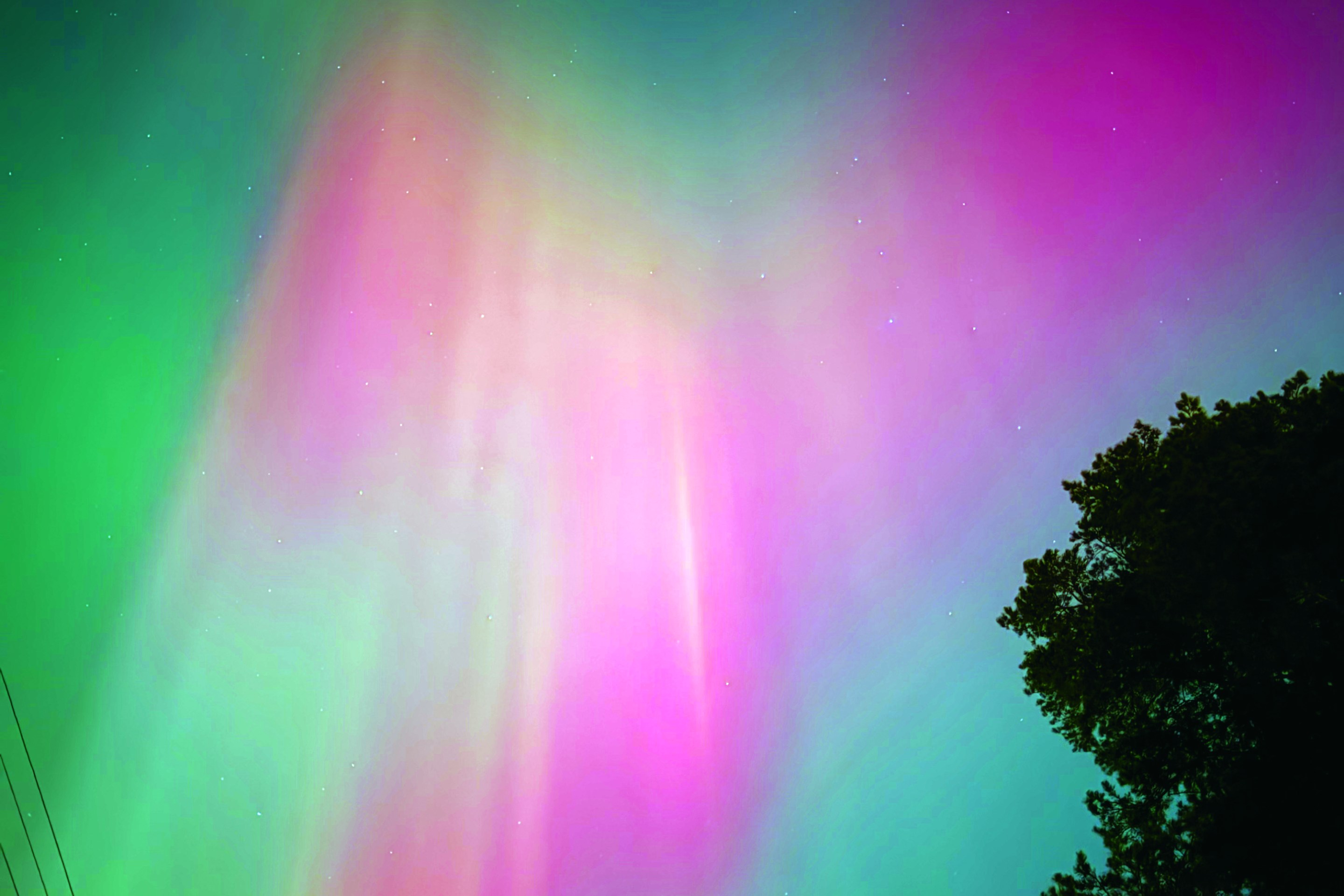Bill Dossett will never forget the moment he realized that the Luminary Loppet was not just any old event.
The year was 2006 and Dossett, who was working as a lawyer in downtown Minneapolis, had recently gotten into cross-country skiing.
He’d spent the past few winters volunteering as an events coordinator for the City of Lakes Loppet Winter Festival, which at the time took place on Lake of the Isles.
A Kenwood resident named Peggy Galvin was spearheading a plan to cap off the races with a nighttime ski event, lit entirely by ice luminaries.
Dossett had agreed to help and was tasked with setting up hot cocoa stands and hay bales along the course.
After he finished helping at the ski races, which ended on the mall leading to Hennepin Avenue, Dossett put on his skis and headed to the channel that connects Bde Maka Ska to Lake of the Isles.
As he got closer, he saw three giant bonfires lighting up the snow-covered lake, each perfectly framed by the bridges arching over the canal. It was so primal and magical and unexpectedly dramatic that the memory of it still makes Dossett tear up.
“It was incredible,” he remembers. “I had no idea it was going to be something that spectacular.”
Neither, apparently, did the organizers of the official Loppet events, who were equally enchanted with the nighttime celebration.
The truth was that no one anticipated the impact a grassroots group of enterprising neighbors would have on a time of year that can be emotionally challenging for many Minneapolitans.
Here was something entirely improvisational and organic, a literal spark of light that dazzled anyone who experienced it.
The Spark
The Spark Peggy Galvin first heard of a winter candlelit event from a fellow Loppet volunteer, who told her about Book Across the Bay, a 10-kilometer ski and snowshoe event on Lake Superior.
A loosely organized plan was hatched to get a few volunteers to make luminaries and place them on Lake of the Isles after the Loppet events were finished. Galvin, who at the time was home raising her kids, coordinated the volunteers.
There was just one hitch: No one knew how to make luminaries at the scale that was needed to line the lake. Galvin asked her husband, Hal, an engineer and hobbyist and self-described lover of “wacky stuff,” if he could figure out a solution.
He called a few local grocery stores and secured 500 used plastic buckets, and he and Peggy set to work in their backyard trying to determine the best way to make a luminary.
Hal also enlisted the help of his best friend, an architect named David Bryan. On a day close to the scheduled event, they borrowed a truck, loaded up the buckets, and went to Lake of the Isles, where, as Hal describes it, “an exercise of mistake after mistake” ensued.
Luminaries won’t freeze, they soon learned, if they are placed directly on the lake. They can’t be out in the cold too long, or they will freeze solid. Not enough time and they will break when you drill the hole to drain them.
Hal monitored them every two hours, waiting until the ice was an inch thick. That milestone happened at 3 in the morning, which is when the volunteers got the call that they needed to get to Lake of the Isles immediately. “It was sort of like delivering a baby,” Hal remembers. “She’s crowning. Let’s get to the hospital.”
Wearing headlamps, the volunteers sloshed around in the icy water.
The truck’s stereo was blaring music while they worked. Hal remembers that one neighbor, clearly not pleased, walked outside, got into the truck and switched off the music.
It was a slog, to be sure. Hal wanted to space the luminaries 20 feet apart and decided to measure the distance in his skate ski strides, stopping so Bryan could spray paint a dot of ink in the snow to mark the spot. It worked well enough, except that strong winds sometimes altered
Hal’s stride. Then, volunteers placed the luminaries and lit them — another process of trial and error. On the night of the event, the team was able to take in the joy on the faces of the skiers. Even though there were roughly only 150 participants, the Luminary Loppet was nothing short of magic.
The volunteers — the founders still call themselves “Luminarians” — had created a public experience that gave people the kind of chills that are not caused by cold weather.
Innovating and Improving
While they were thrilled by the success of the first Luminary, the Galvins assumed it was one and done.
Then, John Munger, who was the Loppet Foundation’s executive director, showed up at their front door and was crushed to discover the volunteers had thrown away the plastic buckets.
Munger said the Luminary was such a success that he wanted it to be a regular feature in all future events.
Hal Galvin went on the hunt for more buckets.
And with that, a decade of innovating and improving the process and the attractions began.
In the early years, volunteers were recruited and scheduled over the phone, often on a single afternoon when the coordinators got together at the Galvins’ house to make calls and eat chili.
The second year, the harvesting of the luminaries was more civilized: volunteers were notified at 10 p.m. instead of 3 a.m. But it was still no joyride.
Jim Young, a Seward resident who was working as a software developer, remembers finishing up in the middle of the night and hanging his rain clothes over his bathtub, being careful to be quiet so as not to wake his wife.
“As I went into bed, I could hear the ice starting to melt off of my rain pants and clink down into the tub,” he says. “It was that thick.” Today, Young is the event’s “managing luminary,” having taken over for Hal Galvin who then handed the role to Dave Bryan.
The freezing and harvesting continued in that vein for several years.
Young remembers talking with a volunteer about the challenges predicting when the luminaries would freeze.
That volunteer suggested they contact an engineer he knew, who would set up a spreadsheet that registered ice thickness, temperatures and wind speeds to get a more accurate estimate for when they will be ready.
That man, Rick Budde, still helps with that task.
The innovations didn’t stop there.
In 2008, the bonfires that had enchanted Dosset were replaced by an ice pyramid, which became a fixture in all future Luminaries.
The fire dancers and “Ice-Cropolis,” a series of 31 ice columns placed in a semicircle near the canoe docks, also started that year. (The arrangement of the columns is based on the mathematical formula of the Fibonacci code.)
Hal Galvin and Bryan had practiced making it at Bryan’s cabin in Wisconsin and then tinkered for years about the best way to stabilize the columns on the ice. “It’s all trial and error,” says Bryan.
In 2009, Jennifer Shea Hedberg, the founder of Wintercraft, which is a company that produces ice globe kits, created an installation of tall luminaries underneath the bridge between Lake of the Isles and Bde Maka Ska.
The following year, Hedberg moved her installation to the Enchanted Forest, which is on a small peninsula near Ice-Cropolis. Inspired by the shafts of ice that build up on the shores of Lake Superior, Hedberg made hundreds of ice glass sheets and installed them throughout the Enchanted Forest.
“That night was my breakout moment,” she remembers. “I loved doing this and wanted to do it forever.” Over time, the Enchanted Forest grew to include ice mushrooms and castles, all lit from within.
In 2023, Dosset, now working as a carpenter, designed the Ice Globes — made using balloons — that hang alongside Luminary Lane.
Despite poor conditions — it had rained a few days before the event — 14,000 people showed up that year, including Dosset’s partner’s mother, who had end-stage cancer and was bundled up in an improvised ski-wheelchair.
The changes weren’t all artistic.
Hal Galvin invented the “Pantoozelator,” a machine that marks the placement of the luminaries.
Made from auto parts, plastic and a baby jogger that was left on the curb with a “take me” sign, the invention has a name inspired by the names of the toys in Dr. Seuss’s “How the Grinch Stole Christmas!” Galvin also was the brains behind the Water Cow, a device that can fill 12 buckets in a minute.

As the event grew, so did the legal requirements, including permits and porta-potties. Those tasks fell to Carla Pardue, an East Isles resident who at the time was working for Al Franken’s office, where she was the deputy finance director.
Pardue also started and ran the Luminary’s party, which initially was held on the canal to Bde Maka Ska and included live music. “The party came about because people wanted a place to gather,” she says.
“They were cold. They were thirsty.
So we made some fire pits. And then Surly came in to serve beer.” It was a chance for people to relax after they skied, to have hot cocoa and make s’mores.
Today, Pardue thinks about these collaborative efforts — volunteers often work 12-hour days — with fondness and pride. “This is winter in Minneapolis and we're outside,” she says. “We’re doing something that nowhere else in the world would do. . . and we’ve been able to do it without a plan but by [following] what we think people want. . . This was our way of giving back and of creating something and it was able to come from joy.”
When the Loppet started charging to cover expenses (a change that was initially not greeted with enthusiasm by more than a few neighborhood residents), Pardue jumped in to help with registration.
Now, the Luminary is the largest annual fundraiser for the Loppet Foundation and supports year-round programming.
Passing the Torch
Today, the Luminary Loppet draws as many as 18,000 participants each year, who register for timed entrances.
Climate change has forced some adaptations, including the last two years, when participants had to walk around the lake because the ice was too thin for skiing. Unsafe ice also forced the party to be permanently relocated to the soccer field on the south side of Lake of the Isles.
Organizers are thinking about how to make the event less reliant on cold temperatures. “We all hope that there is snow and really good ice so that we can be on the lake, but we’ve also shown that we can put on a really great event without those conditions,” says Lindsey Johnson, who started volunteering for the Luminary in 2012, when she was a student at the University of Minnesota.
She now works for the foundation as the event’s manager. She is proud of the fact that regardless of the conditions, people are still enjoying being outside during the coldest time of the year.
Almost 25 years later, many of the original Luminarians are passing their roles down to the next generation. They’ve written manuals with step-by-step instructions and engaged apprentices to learn the ropes.
“It’s time to pass the torch,” says Peggy Galvin. “I believe in the goodness of people and the evolution of things and that there will be new people with new ideas and new approaches. And I trust that that is a good thing, that you should not always hold on tight thinking nobody else can do what I do. . . .I think we've created something very cool. We've set it on its path and it has flown and it has its own legs and there will be other people impacting it and helping it to be better.”
